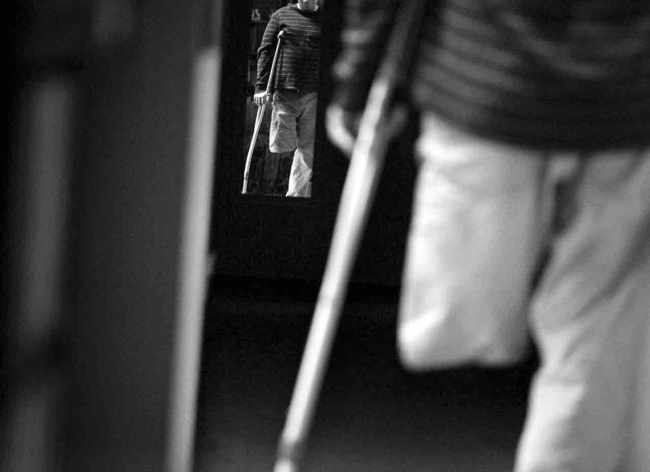A Look Into the Disorder that Creates a Desire for Amputation
Imagine for a second feeling “overcomplete.” You have all of your limbs, and they are perfectly healthy. Yet, you feel as though your leg doesn’t belong to you. It shouldn’t be there, and you know it needs to go. The only way you can feel “whole” again is through its removal. You might be wondering why anyone would want to get rid of a perfectly healthy limb. Well, this phenomenon is the result of apotemnophilia, or Body Integrity Identity Disorder (BIID), a condition characterized “by the intense and long-standing desire for the amputation of a specific limb.” Most know exactly where they want the line of amputation to be, and this place stays fairly constant as time passes. Since it is rare for a surgeon to agree to amputate a healthy limb, many suffering from this condition will unfortunately resort to attempting the amputation themselves. In the past, this rare disorder was thought to be only psychological, and that perhaps the yearning for amputation was simply a way of seeking attention. However, in recent years, studies have shown otherwise.

Amputation makes the patient feel "whole."
One study performed by David Brang, Paul D. McGeoch and Vilayanur S. Ramachandran suggests that apotemnophilia is indeed a neurological disorder. The otherwise healthy subjects of the study went through a series of blind skin conductance response tests where they were pinpricked above and below the line where the amputation was. The responses to the pinpricking below the line were much greater than those above it. The resulting differences found suggest some abnormalities with the somatosensory input to the body part in question.
They suspect the disorder to be a consequence of damage to the right parietal lobe, which is responsible for processing sensory input from certain areas and forming our sense of body image. It could be the dysfunction within the right parietal lobe, specifically the right superior parietal lobe, causing irregular sympathetic output. The discrepancy between the signals and body image can lead to the feeling that a certain limb doesn’t belong and should be removed in order to feel “complete.” In addition, most patients have dealt with these feelings since childhood suggesting that the dysfunction is congenital.
In other studies, patients who did undergo surgery to remove part of a limb reported a significantly higher quality of life because of the resulting feeling of “completeness” after their imputation, despite subsequent disabilities. In order to cope with their desires for amputation, some patients who can’t get the surgery use prosthetics, wheelchairs, or canes to create the feeling that they have an amputated limb.
The research on the topic is not yet conclusive, and there are still several unanswered questions. However, this bizarre disorder is worth further investigation. The more insight neurologists gain over apotemnophilia, the more we learn about the way our brains process the information that is responsible for our body image and the way we perceive ourselves, something that as we know, plays a large role in our society.
– Anna Gaziano
Sources
Apotemnophilia: a neurological disorder – Cognitive Neuroscience and Neuropsychology
Body Integrity Identity Disorder – PLOS one